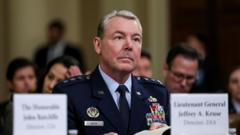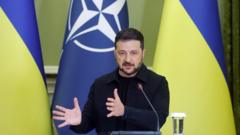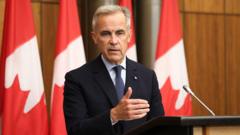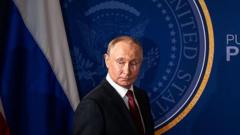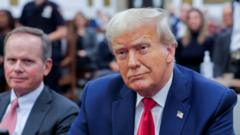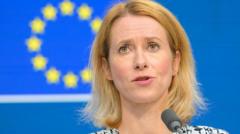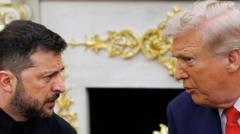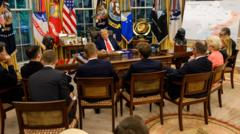While the minerals deal signed between the U.S. and Ukraine opens potential avenues for financial support and European Union integration, the absence of security guarantees could leave Ukraine vulnerable, complicating former President Trump's connection to the nation's recovery and future aspirations.
U.S.-Ukraine Minerals Deal: A New Chapter for Trump's Role in Ukrainian Recovery

U.S.-Ukraine Minerals Deal: A New Chapter for Trump's Role in Ukrainian Recovery
The recent minerals deal between the U.S. and Ukraine marks a significant step in their partnership, but raises questions about its implications for Ukraine's future and security.
In a pivotal development, the United States and Ukraine have finalized a minerals deal that could provide substantial financial resources for Ukraine's post-war recovery. This agreement, disclosed by Ukraine's government, comes amidst ongoing tensions with Russia. The deal positions Ukraine to leverage its rich natural resources, primarily titanium, to create a joint investment fund aimed at revitalizing the war-torn nation.
However, financial returns from these untapped resources are expected to take years, potentially undermining the immediate expectations set by former President Trump regarding their profitability. One notable absence from the text of the deal is any reference to the security guarantees that Ukraine has been pressing for to safeguard against Russian aggression in the future. This omission raises crucial questions about the adequacy of this agreement in ensuring Ukraine’s long-term security.
While the U.S. had initially proposed that Ukraine utilize its mineral wealth to offset past military aid, this suggestion was notably absent in the finalized deal—perhaps an indication of a shift towards a more favorable partnership model. Moreover, the document hints at a pathway for Ukraine to join the European Union, a notion that has implications for both European and American foreign policy doctrine.
In summary, this arrangement not only ties Trump closer to Ukraine's trajectory but also emphasizes the multifaceted nature of international aid that balances economic support with geopolitical strategy. As the situation evolves, all eyes will remain on how effectively Ukraine can harness its resources and secure its future in a landscape still overshadowed by conflict.
However, financial returns from these untapped resources are expected to take years, potentially undermining the immediate expectations set by former President Trump regarding their profitability. One notable absence from the text of the deal is any reference to the security guarantees that Ukraine has been pressing for to safeguard against Russian aggression in the future. This omission raises crucial questions about the adequacy of this agreement in ensuring Ukraine’s long-term security.
While the U.S. had initially proposed that Ukraine utilize its mineral wealth to offset past military aid, this suggestion was notably absent in the finalized deal—perhaps an indication of a shift towards a more favorable partnership model. Moreover, the document hints at a pathway for Ukraine to join the European Union, a notion that has implications for both European and American foreign policy doctrine.
In summary, this arrangement not only ties Trump closer to Ukraine's trajectory but also emphasizes the multifaceted nature of international aid that balances economic support with geopolitical strategy. As the situation evolves, all eyes will remain on how effectively Ukraine can harness its resources and secure its future in a landscape still overshadowed by conflict.




